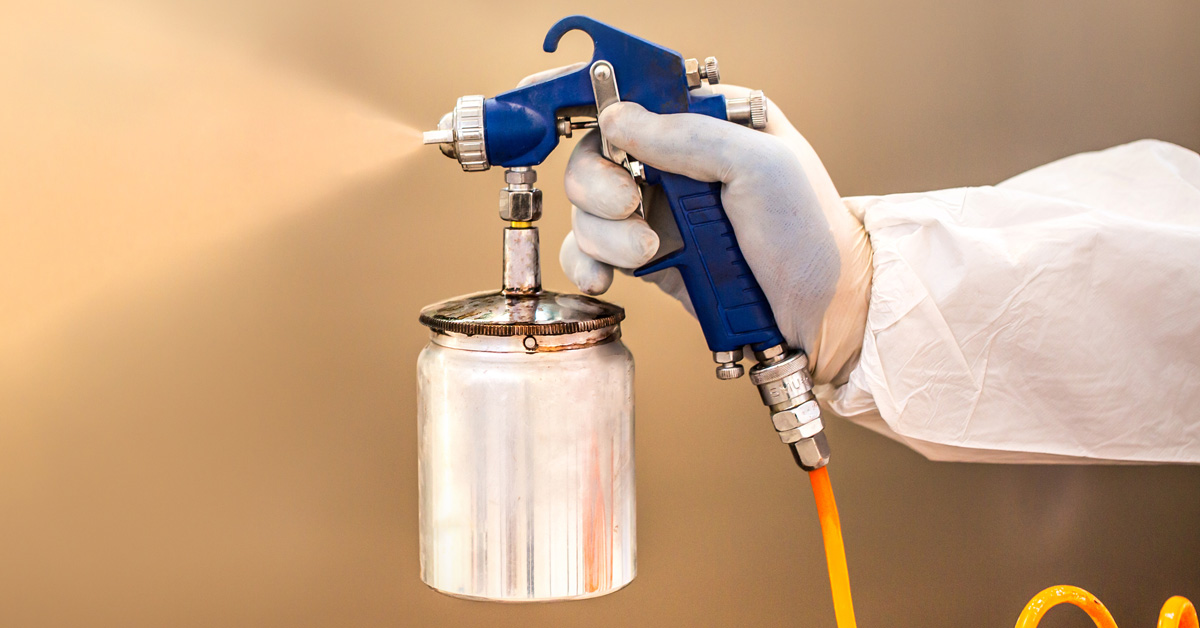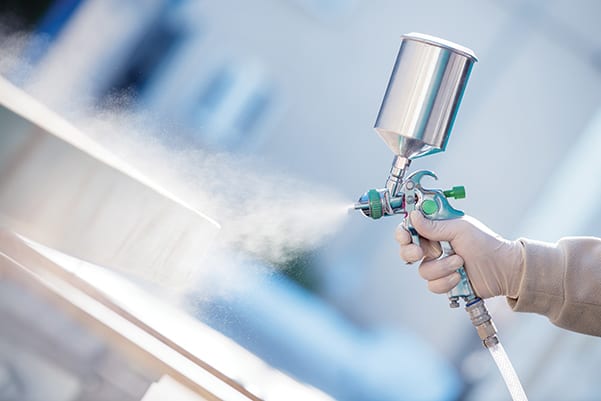Wondering how cold you can spray paint? Spray painting in temperatures below 50°F can be difficult. Cold weather affects paint adhesion and drying times. The paint may not stick well and could dry unevenly. This guide will explore everything you need to know about spray painting in cold weather. From understanding the effects of temperature to practical tips, you’ll find all the answers here. Let’s dive in and discover how to tackle spray painting when it’s chilly outside.

Why Temperature Matters in Spray Painting
The Impact of Temperature on Your Painting Project
Temperature affects spray paint’s performance. Cold air thickens the paint, affecting the spray. This leads to uneven coverage and longer drying times.
How Cold Weather Affects Paint Chemistry
Cold weather alters paint chemistry. The paint may become less viscous, leading to poor adhesion and finish.
Real-Life Impact: A Painter’s Point of View
Sarah, a professional painter, says, “Cold can make paint clumpy. It’s crucial to adjust techniques.”
Ideal Conditions for Spray Painting Success
Finding the Perfect Temperature Sweet Spot
The best temperature for spray painting is between 60°F and 70°F. This range ensures smooth application and drying.
Understanding How Humidity Plays a Role
High humidity can cause paint to dry slowly. Aim for moderate humidity levels.
Wind: Friend or Foe?
Wind can blow dust onto wet paint. It can also cool surfaces, affecting adhesion.
What You’ll Notice When It Goes Wrong
Adhesion Problems in Cold Weather
Paint may peel or flake off when it’s too cold. This happens because the paint can’t stick properly.
Longer Drying Times: Patience is Key
Cold weather extends drying times. You might need to wait hours or even days for it to fully dry.
Uneven Coating and Surface Imperfections
Cold air can cause paint to appear blotchy. This occurs when the paint doesn’t spread evenly.
Preparing for Cold Weather Painting
Choosing the Right Paint for Cold Temperatures
Pick paints labeled for cold weather use. These are formulated to perform better in low temperatures.
Getting Your Surface Ready for Paint
Ensure the surface is clean and dry. This helps the paint adhere properly.
Why Primer is Your Best Friend
Primer creates a smooth base. It helps paint adhere better, especially in cold weather.
Techniques to Tackle Cold Weather Challenges
Warming Up the Spray Paint Can
Place the can in warm water. This helps maintain the right paint consistency.
Keeping the Surface Warm for Better Results
Use heat lamps to warm the painting surface. This can help the paint adhere better.
Adjusting Your Spray Technique for the Cold
Spray in thin layers. This prevents drips and helps the paint dry evenly.
Tools and Equipment to Make Life Easier
Using Heaters and Heat Lamps
Heaters can keep the workspace warm. This ensures optimal paint performance.
Creating a Shield: Windbreaks and Shelters
Build temporary shelters to block the wind. This prevents dust and debris from sticking to the wet paint.
Specialized Equipment for Cold Days
Some spray guns are designed for cold weather. They maintain paint temperature for smooth application.
Sidestepping Common Pitfalls
The Importance of Surface Preparation
Never skip surface prep. A clean surface ensures better paint adhesion.
Weather Conditions: Don’t Turn a Blind Eye
Always check the forecast. Avoid painting if rain or snow is expected.
Protecting Your Painted Area
Use tarps or covers to protect freshly painted surfaces. This guards against environmental damage.
Safety First: Protect Yourself
Dressing Appropriately for the Task
Wear warm clothing and protective gear. This includes gloves and masks.
Ensuring Good Ventilation in Indoor Spaces
Open windows and use fans. This prevents fume buildup when painting indoors.

Handling Paint with Care
Read labels for safety instructions. Proper handling prevents accidents or health risks.
FAQs: Your Burning Questions Answered
What is the Lowest Temperature for Spray Painting?
Spray painting below 50°F is tricky. Paint struggles to adhere and dry properly. The cold thickens the paint, making it hard to spray. It can also lead to uneven layers or sagging. Specialized cold-weather paints exist, but they still require care. Ensure the spray paint can and surface are warm. This helps maintain the right viscosity for better application. Consider using heat lamps or warm water baths for the paint can. This ensures better performance even in cooler conditions.
Can You Spray Paint in Cold Weather?
Yes, you can, but it’s not easy. Cold weather affects how paint sticks and dries. You’ll need to take extra steps for success. Keep the spray can and surface warm. Use heaters or heat lamps for this. The paint takes longer to dry, so be patient. Thin coats work best, as they dry faster. Windbreaks can shield your project from dust and debris. These steps make spray painting in the cold possible, but it takes effort and patience.
How Does Cold Affect Paint Drying?
Cold weather slows paint drying. The solvents in the paint evaporate slower, causing delays. This can lead to a sticky finish or uneven surface. In cold weather, chemical reactions in the paint slow down too. This affects the paint’s final look and durability. Ensure good airflow and warmth to help the drying process. Patience and proper techniques are vital. Heat lamps or space heaters can speed up drying. Be careful not to overheat, as this causes issues like cracking.
What Paint Should I Use for Cold Weather?
Use paint made for cold conditions. These paints contain additives for better adhesion and curing. Oil-based paints work better in the cold than water-based ones. Always check the label for manufacturer recommendations. This ensures you choose the right product for your project. Cold-weather paints help you achieve a better finish and durability. They are specifically designed to perform in lower temperatures.
How Can I Speed Up Paint Drying in Cold Weather?
Use heat lamps or space heaters to warm the area. This raises the temperature around the painted surface. Good airflow helps too, so use fans. Apply thin coats, as they dry faster. Be mindful not to overheat, or the paint might crack. This method helps speed up drying without compromising quality. Patience and proper techniques are crucial for success.
Is it Better to Paint Indoors When It’s Cold?
Painting indoors is a good option in cold weather. It allows you to control temperature and humidity. Ensure proper ventilation to avoid fume buildup. Use fans or open windows slightly for airflow. Make sure the indoor space is warm enough for the paint to cure. This avoids issues like blisters or poor adhesion. Indoor painting provides a controlled environment for better results, but be mindful of safety.
What Are the Signs of Paint Failing Due to Cold?
Signs include peeling, chipping, or cracking. The paint might look dull or uneven. Longer drying times are another indicator. If the paint doesn’t adhere, it might sag or run. These issues are often due to poor surface preparation or painting in too cold temperatures. Ensuring proper conditions and preparation can help prevent these problems.
Conclusion
Spray painting in cold weather presents challenges, but with the right techniques and tools, it’s possible to achieve great results. Understanding the effects of temperature on paint, preparing your surfaces, and using specialized equipment can make a significant difference. Whether you’re a DIY enthusiast or a professional, patience and attention to detail are key to successful spray painting in chilly conditions. With this guide, you’re well-equipped to tackle your next cold-weather project with confidence.
Jane Ansems is a highly talented and accomplished spray can artist, known for her intricate, detailed, and thought-provoking works of art. She began her career as a street artist in the early 2010s, quickly gaining recognition for her unique and innovative style.








